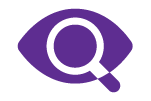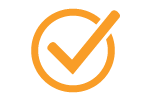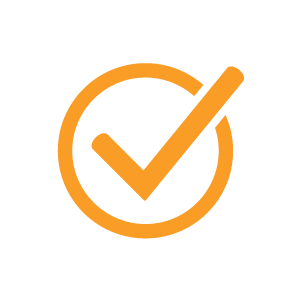
The Toolbox includes many resources related to Pillar 2: People and Culture, and categorized into subtopics listed below. Check out this Intended Use document (pdf) to see a brief description of each item available. A supplementary References document (pdf) is also available.
Note: Any tools and/or resources used from this Toolkit should be adapted for you own laboratory or health system, as appropriate.
Employee Recognition
Use to nominate staff for lab exemplar award, recognizing those who go consistently go above and beyond.
Sample form to use to request a spot bonus for an employee for going above and beyond, or because they worked on a big project.
Use to recognize employees who exceed expectations or go the extra mile to help their fellow employees.
Mentorship
Use this sample application to give to the mentee to complete so you (lab manager/director) can match them with the appropriate mentor based on skills, interests, etc.
Use this tool as a guideline for considerations when offering shadowship opportunities to interns individuals an opportunity to experience an authentic clinical laboratory experience.
Diversity, Inclusion, Equity, Accessibility, and Belonging(ness)
Use this presentation to learn how to apply best practices for creating a diverse laboratory workplace.
Use this presentation to describe the role of DEIAB in the medical and public health laboratory workforce and in workforce development initiatives.
Succession Planning
Use to help calculate average age by position and set up a plan for succession planning. Communicate the information with HR and senior management to setup a strategic recruitment plan.
Survey initially defines and describes the steps to succession planning. Tool/Survey allows users to assess their current succession planning in the laboratory. “Establish your starting place”
Better understanding of the perceptions and utilization of succession planning programs within the laboratory. This tool provides some insights on succession planning. It describes some tools, pitfalls, and key stakeholders in succession planning. Also, provides some data to base succession planning programs.
This represents a Succession Management Implementation Guide, including four steps for building high- impact succession plans.
Research paper by Ihab Abumuhor (ASCP-JCC Leading Laboratory Award Recipient) about succession planning. It contains tools, ideas and literature review for laboratory managers to use and implement regarding succession planning.
Staff Development
Implement these strategies to develop staff who have leadership potential.
This tool helps managers/directors evaluate if an employee has leadership potential.
Use this tool to deliver effective feedback.
Share with staff, managers, and leaders in the lab so they can identify their own blind spot and create and action plan to improve it.
Use this to help create and implement your Professional Development Plan successfully.
Development is an experience or feedback that enhances an individual’s professional knowledge, skills, or abilities. On-the- job (OTJ) development provides intentional learning through experience.
Annual Performance Review
Give to employees to complete prior to completing their annual performance evaluation.
Managers are encouraged to provide regular input to employees through ongoing coaching conversations. While early signs indicate that this is a better approach, some help may be needed on how to approach this new normal. This gives some guidance for having these conversations.
Employee Rounding
Use this form to summarize the rounding results on employees. This form is used monthly by managers to summarize the results of the rounding and document what they were able to work on or accomplish, what issues are in progress and things that they couldn’t answer.
Example of completed rounding stoplight exercise.
Use this tool to improve communication, strengthen relationships, create approachability, assess improvement opportunities, obtain actionable information, and recognize employees through rounding.
Employee rounding is a system that ensures clear communication and builds trust between staff and management. It involves a leader taking time each day to touch base with employees, make a personal connection, find out what is going well, and determine what improvements can be made. Use this form to support laboratory leader rounding on staff.
Employee Engagement
An employee engagement survey helps you gain an understanding of what motivates your team and provides insight into creating a better workplace.
This is a reference of sample employee engagement survey results. This can provide insights into the types of questions that can be asked of laboratory staff in an engagement survey and how that data can be visualized.
Sample debriefing (feedback) from employee engagement survey for the manager to use to create an action plan. Usually, debriefing is conducted by a manager or director from a different department. This will allow staff to give honest feedback.
This is an example of a culture of safety/employee engagement timeline that laboratory managers/directors can use to roll out their own employee engagement survey.
Sample PowerPoint that managers can use to present their Culture of Safety/employee engagement results to their employees.
Questionnaire to identify what are some of the employee’s strengths and what projects or tasks could they work on that would maximize their strengths?
Interview Questions
Used to interview lab candidates. These questions are meant to gauge how candidates react to stress, what is their skill- level, and how they conduct themselves in a professional environment.
A behavioral interview is a technique used by many hiring managers to help evaluate a candidate’s future performance. This involves asking questions about the candidate’s behavior in past situations that are similar to the ones required in the role you are trying to fill.
Hiring and Justification
This is an equity adjustment spreadsheet for managers/ directors to evaluate internal equity and compression analysis.
Use to analyze pay of multiple staff within the same classification or different classification to make a decision of whether or not the employee needs equity adjustment.
Use this template to request pay increase adjustment for an employee from senior management.
Use to request pay increase for an employee from your VP/ Director.
Sample New Position Justification (CLSI and Lab technician). Sample letter to use to justify hiring for a new position.
Customer Service Training
Use the PowerPoint to train staff on customer service.
Use the PowerPoint to train staff on customer service.
To create positive experience for patients and customers. Use to help each staff learn how they can improve the way they relate to patients, internal and external customers.
Other Miscellaneous
Leadership and employees who are interested in leading process improvement initiatives that drive transformational change enhance the culture of the organization. This is a reference syllabus for a course that can be conducted on Lean Six Sigma certification to support these leaders.
Worksheet aids in the process of outlining a project. User answers the questions and breaks down the A3 process. These answers can be transferred to the A3 project template form.
Starting up process improvement projects can be difficult. It’s important to have a focused approach. A3 template will focus your process improvement project including scope, ways to measure, and potential improvements.
Use to present at High schools, colleges, career days to promote the MLS profession.
Use to help reduce burnout in the clinical lab. Includes links to resources and toolkits to use to help reduce burnout. Helping reduce burnout is very critical in improving productivity of the staff. Burnout of health care professionals describes a combination of emotional exhaustion, depersonalization, and loss of sense of personal accomplishment.

Outlay a plan for communications to promote visibility of the laboratory and gain stakeholder buy-in and interest in the laboratory.

Be the best place to work in pathology and laboratory medicine by cultivating diverse life-long learners and engaging and guiding the next generation of laboratory leaders, supervisors, managers, and MLS to build a culture of patient-focused lab advocates.

Strengthen the quality program throughout the department and enhance patient safety

Ensure that overall financial performance continues to keep pace with the operating and capital requirements needed to advance divisional and departmental mission and values.

Accelerate innovation and implement the best cutting-edge technologies throughout the laboratory to increase clinical volume, operational expansion, and geographic outreach.

Let’s put the Toolbox to work!

Outlay a plan for communications to promote visibility of the laboratory and gain stakeholder buy-in and interest in the laboratory.

Be the best place to work in pathology and laboratory medicine by cultivating diverse life-long learners and engaging and guiding the next generation of laboratory leaders, supervisors, managers, and MLS to build a culture of patient-focused lab advocates.

Strengthen the quality program throughout the department and enhance patient safety

Ensure that overall financial performance continues to keep pace with the operating and capital requirements needed to advance divisional and departmental mission and values.

Accelerate innovation and implement the best cutting-edge technologies throughout the laboratory to increase clinical volume, operational expansion, and geographic outreach.

Let’s put the Toolbox to work!
